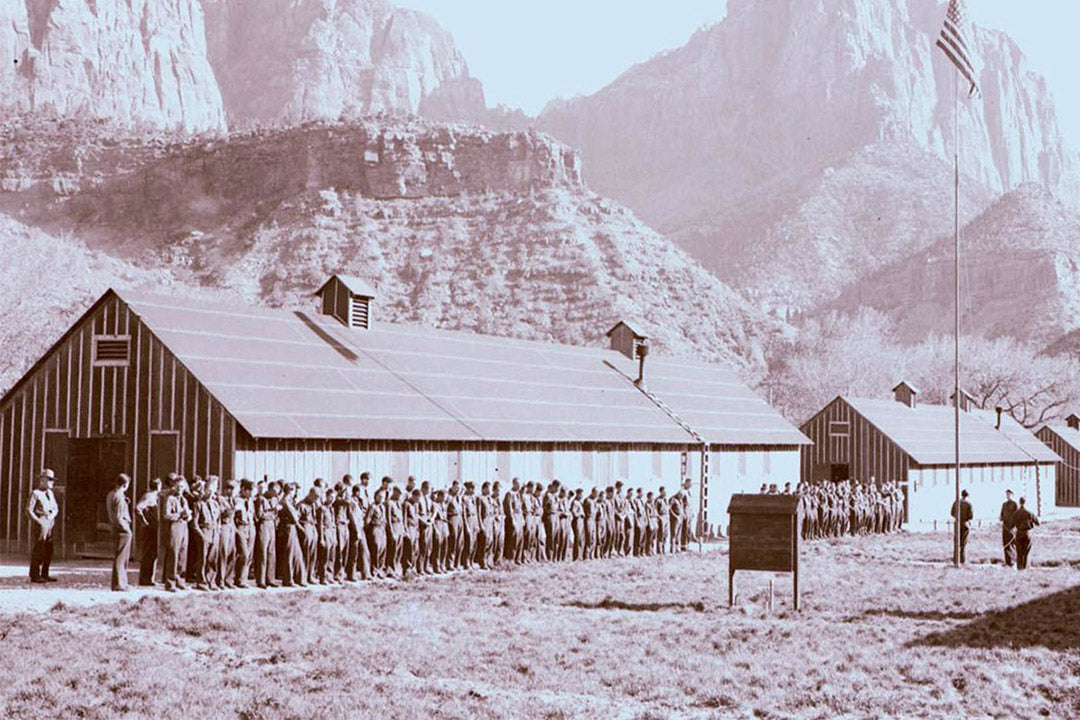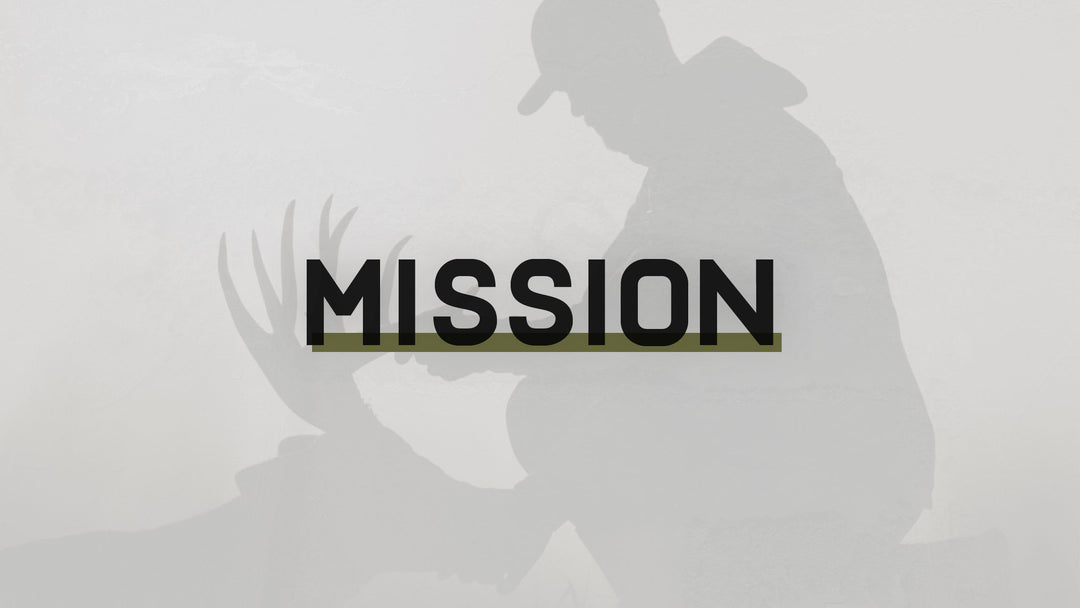The CCC: America’s Forest Conservation Army

An Under-Appreciated Keystone of American Conservation
In the heart of the infamous Great Depression, the United States of America did something unthinkable. They put conservation at the forefront of their efforts to save the nation's forests and youth.
The Civilian Conservation Corps changed the American landscape in a big way. Accredited with planting an estimated three billion trees, building 97,000 miles of fire roads, 771 State Parks, and constructing countless recreational facilities in their short nine-year existence, this little talked-about program single-handedly saved America’s forests and wildlife from utter destruction.
What the Civilian Conservation Corps accomplished is simply remarkable. It is an under-appreciated organization that cemented the importance of conservation in the minds of Americans.
What is the Civilian Conservation Corps?
The Civilian Conservation Corps, more commonly referred to simply as the CCC, was a program born out of Franklin Delano Roosevelt’s New Deal. At its heart, the program had two goals: 1. Improve America’s timber resources/combat soil erosion. 2. Employ the thousands of unemployed young men hit hard by the Great Depression.
In an emergency session held on March 9, 1933, just three days after his inauguration, FDR asked the 73rd Congress to authorize the Emergency Conservation Work(ECW) Act. Executive Order 6101 was issued with the statement, “An act for the relief of unemployment through the performance of useful public work, and for other purposes.” With Congressional approval, on March 31, 1933, the Civilian Conservation Corps was founded. FDR had put one of the most significant conservation movements in history into action.
In just three months from its inception, the CCC had a workforce of 250,000 strong young men. The CCC was essentially a peacetime Army. The members wore uniforms and worked 8-hour days. Their projects were physically demanding and required the men to work in teams. At its height in 1935, there were over 500,000 men enrolled in “Roosevelt’s Tree Army,” spread out over 2,600 camps! When the program finally ended in 1942, over 3,000,000 men had been employed in the name of conservation.

Life in the Conservation Army
Spread out amongst some of the wildest and most rural corners of the United States, the CCC camps of the day closely resembled Army Camps. Tents and cabins were constructed as barracks, and men adhered to a strict schedule for both work and leisure, and hot meals were served three times a day. For many enrollees, this would be their first experience outside of their state, away from home.
Enrollees would sign up for an initial six-month stint with the opportunity to re-enroll for up to two years. Applicants would apply through their local welfare office and regional Veterans Administration facilities. The Dept. of Labor then selected enrollees based on age and marital status. Single men aged between 18 and 23 years were selected. Veterans of the Spanish-American War and World War I were appointed without consideration of age or marital status.
In addition to the above requirements, all enrollees had to be in good physical and mental shape. A combination of Army, Navy, and civilian physicians provided medical care for the CCC. Additionally, selected enrollees will be further trained in first aid. The pay was low but more than appreciated by the depression-stricken members of the CCC. Each month, enrollees received $30, assistant leaders $36, and leaders $45. To ensure that the enrollees helped themselves and alleviated stress on their families, at least $22 of each month’s pay was directly allotted to them. Veterans had to allocate at least 75% of their pay to their families.
Daily work included wildlife habitat protection, stream improvement, fish stocking, planting trees, and a number of other jobs. In addition to these daily tasks, the CCC played a vital role in natural disaster relief, assisting communities hit by hurricanes, tornadoes, and forest fires. At the end of each day, enrollees enjoyed many activities that the camp provided, further building camaraderie between the members. Motion pictures, games, educational courses, and religious services were all available on-site.
While the camps weren’t precisely like military camps, the War Department saw that it was a close enough comparison that CCC enrollees didn’t have to go through basic training if they entered military service at a later date. Many of the CCC enrollees would be the first called upon as the U.S. military began to draft men for the Second World War, my great-grandfather included.
“Since the corps began some 1,150,00 of you have been graduated… Our records show that the results achieved in the protection and improvement of our timbered domain, in the arrest of soil wastage, in the development of needed recreational areas, in wildlife conservation and in flood control have been as impressive as the results achieved in the rehabilitation of youth. Through your spirit and industry it has been demonstrated that young men can be put to work in our forests, parks, and fields on projects which benefit both the nation’s youth and conservation generally.”
- U.S. President Franklin Delano Roosevelt, 1936
The Unprecedented Impact of the Civilian Conservation Corp
Many people don’t realize how dire the situation was in the United States in the late 1800s and early 1900s. The wildlife had been decimated by market hunting, and the forests had been overharvested, creating vast barren landscapes.
With the emergence of the railroad, it became much easier to move lumber. You no longer required waterways to get logs to market. Small railroads sprawled throughout what would become the Allegheny National Forest. Timber was quickly stripped from the landscape as every tree was cut and sold. This lack of vegetation meant the ground couldn’t hold moisture like it needed to. That led to wildfires—lots of them. The brush in that area just seemed to always be on fire. The dry and infertile land became known as “The Great Pennsylvania Desert.”
Something had to change. The Allegheny National Forest suffered from three straight decades of constant fire when the CCCs finally emerged. Camps popped up all over the forest, fire towers were made, fire breaks were dug, and fires were constantly put out. Before the CCC's arrival, fires regularly burned large tracts of 20,000 acres. Fire suppression techniques evolved to the point where the CCC could get a grasp on things and start to regenerate the land into a healthy forest again.
In late 1935, the CCC was tasked with doing a census of game populations in the area and was happy to report that the efforts made to regenerate the forest proved to create an abundance of deer, upland birds, and small game. As a testament to their work, there hasn’t been a fire larger than 500 acres in the Allegheny National Forest since they left in 1942.
Luckily, we’ve come a long way in our timber management, and the scorched earth timber harvesting is a thing of the past as select cuts have taken over. Much of the work the CCC accomplished put these management techniques into motion, and the hundreds of thousands of miles of fire roads they built made this conservation effort possible.

We Walk on the Shoulders of Giants
The CCC’s tireless work in forest renovations was largely responsible for the great boom in deer populations following WWII. This, in turn, led to many veterans of the war becoming hunters and ultimately instilling the lasting hunting heritage many of us experience within our families today.
Many of the State and National Parks you visit each year were built by the CCCs. This includes one of the most popular parks in the country, the Great Smoky Mountain National Park, which the CCC built almost entirely.
The underappreciated service these men provided to our country instilled a baseline for our conservation heritage. Next time you visit a park or forest near you, look at the historic signs and monuments placed throughout. There is a good chance that some of your favorite hunting and recreational areas are the way they are because of the Civilian Conservation Corps.
Written by Kurtis Martonik, Spartan Forge Researcher and owner of The Gunsmithing Journal








